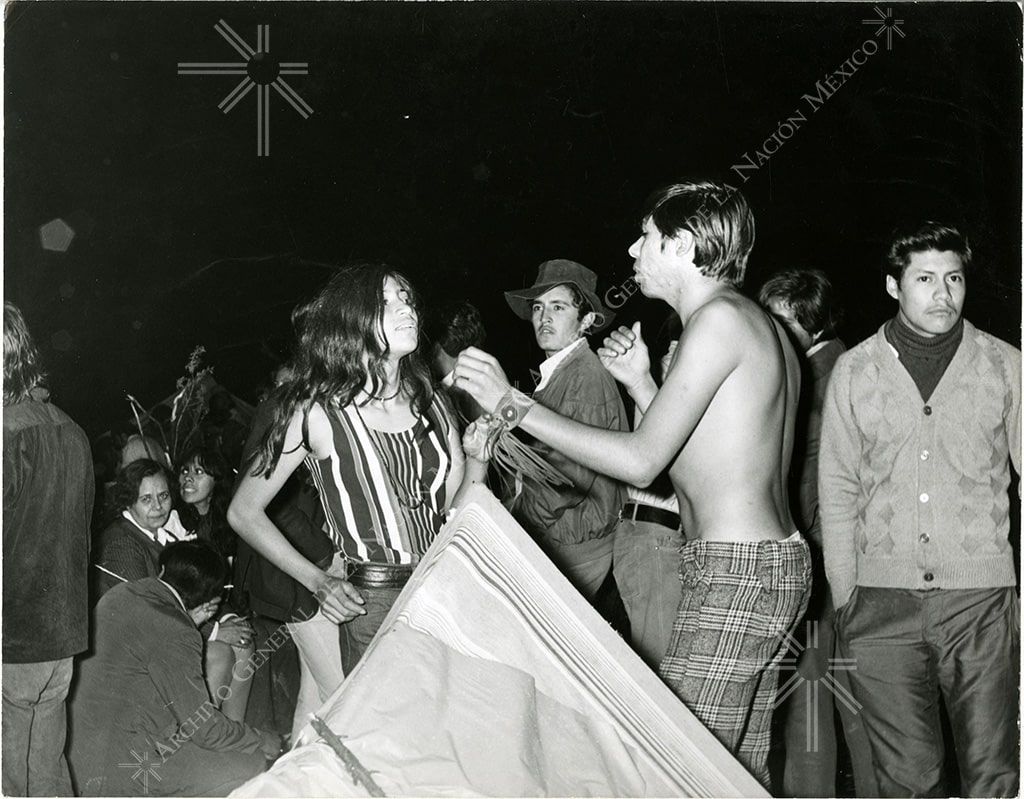How was the hippie movement in Mexico in the 1960s?
The development of the hippy counterculture in the 1960s represented a threat to authoritarian social structures. For this reason, the Mexican state kept a watchful eye on the people who were part of this subculture.

The so-called hippie movement has its origins in the 1960s, a counterculture that developed in the cities of Berkeley and San Francisco in the state of California, United States of America. The main characteristics of this movement were framed in the freedom of the individual, collective love, pacifism, and anti-authoritarianism.
Actions such as the consumption of hallucinogenic and depressant substances such as lysergic acid (LSD), mushrooms, marijuana, and opioids were considered acts of rebellion and liberation. Likewise, sexual freedom and polyamory sought to break with the social paradigm of monogamous and heterosexual relationships.
The hippie movement also favored the evolution of popular music, especially the rock genre, which began to experiment with new styles such as psychedelic rock, which was born from the use of the substance as an element of artistic inspiration. The crowds that were observed at rock festivals, such as the Summer of Love (1967) and the Woodstock Music and Arts Festival (1969), were proof of the great impact that this movement had on the music of the 1960s.
One of the positions of the hippie movement that had the greatest social impact was its forceful rejection of the Vietnam War. Under the slogan and symbol of "Love and peace" or "Make love, not war". Under these banners, a large number of young people demonstrated and mobilized against the discourse and war practices supported by the United States of America against communism and any social and political activity considered close, in the context of the Cold War.
The clothing and aesthetic aspect also played a transcendental role in this movement, since their rejection of the normalized structure of society and formal work was manifested through the appearance of long hair and long hair, both in women and men, as well as in the marginality of their clothing.
In this situation, the hippie movement was seen as a threat to the American state because of its anti-American and anti-modern stance. This led to the emergence of new prohibitionist policies aimed at counteracting the advance of the hippie counterculture. Among them was the initiation of a forceful war against narcotics, considered the basis of the social evil of the 1960s.
Despite having its origins in the white American counterculture, it managed to expand to other latitudes, including Mexico, where hippie travelers developed a broad admiration for ancient cultures, shamanism, and the cult of the mushroom. However, like our northern neighbor, the Mexican State considered the hippie movement as a social threat, which required to be monitored by the control and surveillance structure of the authoritarian regime of that time.
Thanks to the documentary collections of the General Directorate of Political Investigations and the Presidential General Staff Section of the National Defense Secretariat, both stored in the AGN, it is possible to learn about the authorities' monitoring of the so-called hippies. For example, since 1969 the Mexican government, through the Secretariat of National Defense, had established the Canado Plan to combat the planting and cultivation of cannabis, having among the main suspects of this practice the hippie groups identified by the Mexican authorities for being vicious, shaggy, practicing yoga and listening to the Beatles.
Likewise, in the 1970s, the Mexican State deployed an anti-hippie plan. This program was aimed at preventing the entry of hippie caravans through border points in the northern part of the country or their pilgrimage to the mythical land of hallucinogenic mushrooms, Oaxaca.
Despite this pernicious surveillance and control exercised by the Mexican authorities over this sector, the hippie movement was able to reach Mexico where some young people found a way of life and artistic and cultural expression, being at the time, a counterculture that resisted the persecution of the Mexican State.




